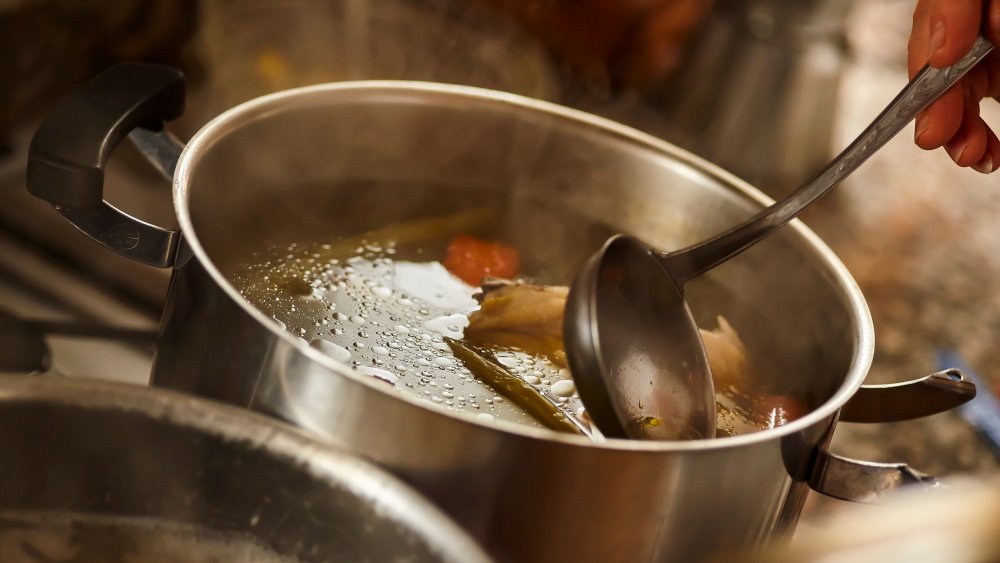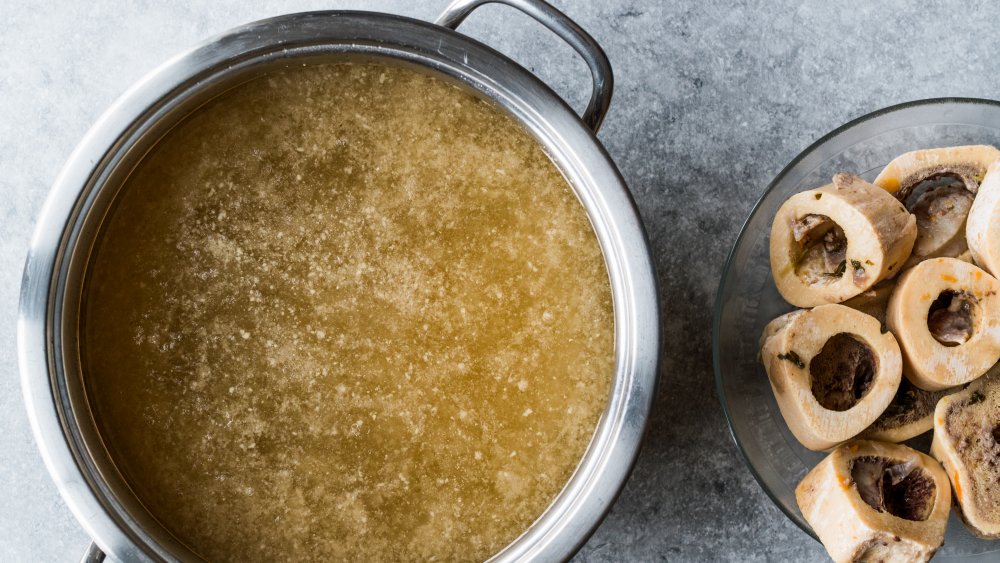You Should Never Throw Out Rotisserie Chicken Bones. Here's Why
Tossing out old Parmesan rinds, mushy bananas, and rotisserie chicken bones might not make or break your entire meal plan, but you are missing out on some wonderful opportunities when you waste foods with so much value. That brittle Parmesan rind can add a world of flavor when it's dunked into a slow-cooking pot of tomato sauce, and those sickeningly sweet bananas are perfect for folding into batters and cookie doughs.
If we sound inspired, it's because we are. In April 2020, food journalist Francis Lam sat down with celebrity chef Samin Nosrat to discuss how you can repurpose chicken when you're already tired of eating it, and this episode of The Splendid Table was nothing short of invigorating. But nothing screams "second wind" quite like the old bones of your long-gone rotisserie chicken. Two words: bone broth.
Why (and how) you should make your own bone broth
"Bone broth" certainly doesn't win the contest for the most delicious-sounding name, but we assure you it's healthy, sustainable, and full of flavorful depth. It's really another name for stock, which, unlike regular broth, is made from bones rather than meat (via The Forked Spoon). Scraping together the bones from your rotisserie chicken won't only save you an unnecessary trip to the grocery store, but it will also allow you to create an incredible base for soups and stews.
Bon Appétit already has a safeguard for any common mistakes: be sure to blanch the bones first before oven-roasting them. Maybe that sounds a little macabre if you're not used to cooking with bones, but bones are like any other food, and submerging them in heat will add complexity to their flavor. Once you get your bones into a large, durable pot, the broth additives shouldn't be too plentiful, according to Bon Appétit: garlic, onion, and some peppercorns will do. (We noticed a suggestion for lemongrass and we have to say, that sounds like aromatic heaven.)
Then comes the waiting. This is no four-hour, Instant Pot affair. Cooks and food writers recommend 10 or 12 hours as a start. Really, the longer you let it simmer, the more flavor you're gathering for later. Technically, you can leave the pot simmering for days on end (via The Kitchn).
The benefits are endless (and tasty)
If you're spending more time at home, this is the perfect recipe to try. We can't stress how beneficial this is — not only for your tastebuds, but for your physical health. When you make your own bone broth, you're essentially adding collagen and marrow to your diet: that means amino acids, iron, vitamin A, and zinc. Some medical studies show that the amino acids in bone broth can increase your ability to sleep well at night (via Medical News Today).
Once you've got your homemade bone broth, the culinary possibilities are endless. If you think your stock is only useful for soup, you're thinking too small — stocks can be used to flavor gravy, pasta sauces, curry, risotto, pot pies, polenta... shall we go on? And, it can be sipped on its own. Not so bad for some leftover bones (via Brit + Co).


